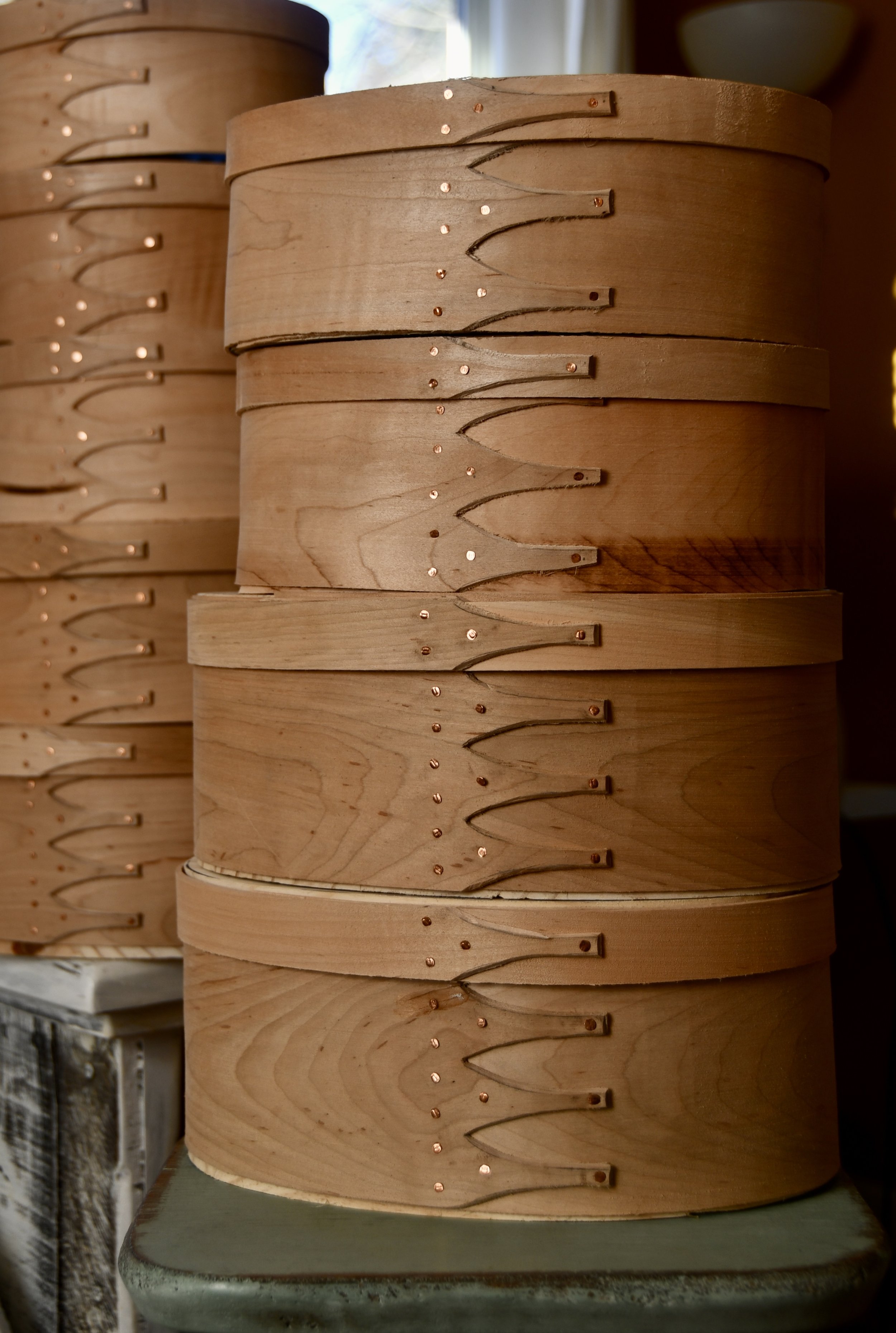(not) A Savvy Business Person
A savvy business person would advise that I should only show my finished work in as perfect a state as I can make it.
Fortunately, I don’t listen to those guys. The photo featured in this post shows a set of nine #5 and 6 boxes I just steamed and bent over the last couple days, as they now sit drying in their forms until they’re ready for the next step. There are no top or bottom pieces yet. The wood has no finish, no paint, and hasn’t been sanded. Saw marks are still visible. Edges still need smoothing. From this angle they might look closer to being done than not, but trust me, there’s a lot of work yet to do.
So why show this? Because I love the process. (Ok, maybe not ALL of the process. Sanding lacks that certain glamor I had hoped woodworking would offer). Every project starts as a mental concept, then becomes a plan (that’s where the math happens), then I buy materials, then I rough cut the wood into what will be bottom bands, top bands, and lid/bottom pieces, then there’s the milling to get everything within the precise tolerance required for wood bending, then there’s the steaming or hot water bath to make the wood pliable…
Up to that point it’s all a series of steps, an act of faith that all these disparate parts, all the sawdust and sweat, and all the time invested will result in something worthwhile. These are parts of a process that deal with pieces of wood. They’re physical and cognitive.
Where the heart gets involved is that moment in a project where whatever it is I’m making (Shaker boxes in this case) suddenly strikes me as no longer being a collection of parts in a process, but as a thing of purpose and beauty in its own right. In every project I’ve ever done, at some point the whole thing crosses an invisible line and becomes, however incomplete, the thing I intended it to be. Before that line, it’s wood and dust and splinters in my hand. After that line, it has a personality. Its grain is delightful. It makes me smile.
That’s the purpose of this post. To involve you (un-businesslike as it might be) in the process and share with you the experience of inspecting these still rough, drying boxes by the morning light. Seeing them makes me smile.

